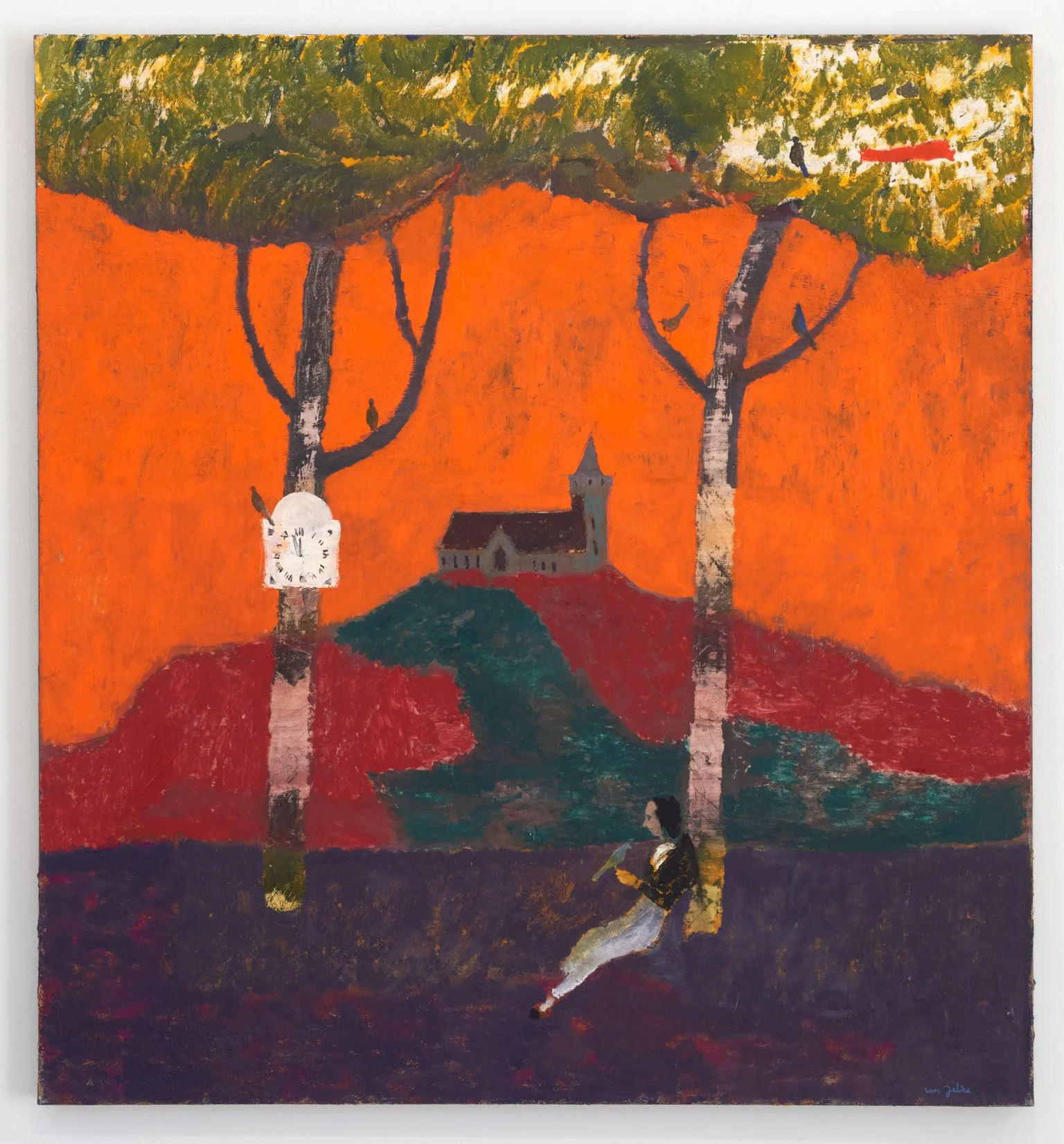IAN FELICE
If the Hoarfrost Could Speak
Artist Reception: February 13th, 2024, 6-8 PM
February 13th - March 13th, 2024
We met Ian Felice in such a roundabout way. Jonathan Anderson, the designer for LOEWE, had bought a painting for himself studio direct and posted about it on Instagram. Having just listened to an interview with Jonathan on the David Zwirner podcast, we were intrigued about what kind of art he collected. Seeing Ian’s work on his feed, immediately we could sense the poetic nature of his process. Like Rene Ricard before him, words (and music) often lead to imagery more than photographs or other kinds of source material. We did a virtual studio visit last year and began thinking about ways to collaborate.
As a successful singer/songwriter fronting the Felice Brothers, Ian took a long sabbatical from painting after art school to pursue his musical journey. Same as for many of us, Covid redirected his energies as touring was impossible and he was living upstate with his wife Kaya and two young kids. He took over a dilapidated chapel on the property adjoining their home and began to paint again.
If the Hoarfrost Could Speak marks Ian Felice’s first proper NYC gallery debut. Below are snippets of writing he supplied regarding three of the paintings in this exhibition:
She left the office, just a short walk
This is a sentence I had written down, I don’t recall from what. I often use words and phrases that I’ve plucked from the world around me. I think of them as bridges between the linguistic and the visual. Where did this woman end up? She turned away from the world, into her own ghostly visions. Here, I attempted to embody the atmosphere of a dream, and tried not to stifle meaningfulness by defining the forms too well. The goal is fluidity of expression, like Lightnin’ Hopkins, it’s not so much a song as the reflection of a spirit and the world perceived by it.
Swans in the endless spaces
This is a portrait of an artist as an illusionist, translating dreams into the exterior world of objects and atmosphere. I relied on ambiguity to give the painting the widest range of interpretations. The face is unfinished, which gives it the effect of appearing on the brink of change. In the same way, I tried to give the swans an ephemeral quality, as if they could vanish at any moment. The figure is reimagining and reworking physical reality to his own unnatural laws. The artist becomes both creator and beholder.
The choir floats over the spire
I often can’t tell why a painting works. In the best cases, it begins to have a life of its own; it is autonomous and no longer needs me. Not only that, it eludes me and makes me dizzy trying to understand. The images need to possess a sort of mystery that invites further investigation. At one point there were dancing skeletons in a hot air balloon in this painting, hovering in the sky. The figures are still visible through the paint, and why shouldn’t they be? Many things in the world are half-hidden and the skies are never empty. Woody Guthrie sings about the apparition of a wheel "a’whirling way up in the middle of the air," when I hear him singing, I can see it in my mind, hanging above the roofs at the edge of night. This sort of painting reflects reality in the way that it appears in my memory, it operates with the freedom of dreams and associations, referencing crewel embroidery, folk songs, silly refrains and naive rhymes that recall my childhood, long before my vision got obscured by understanding.



